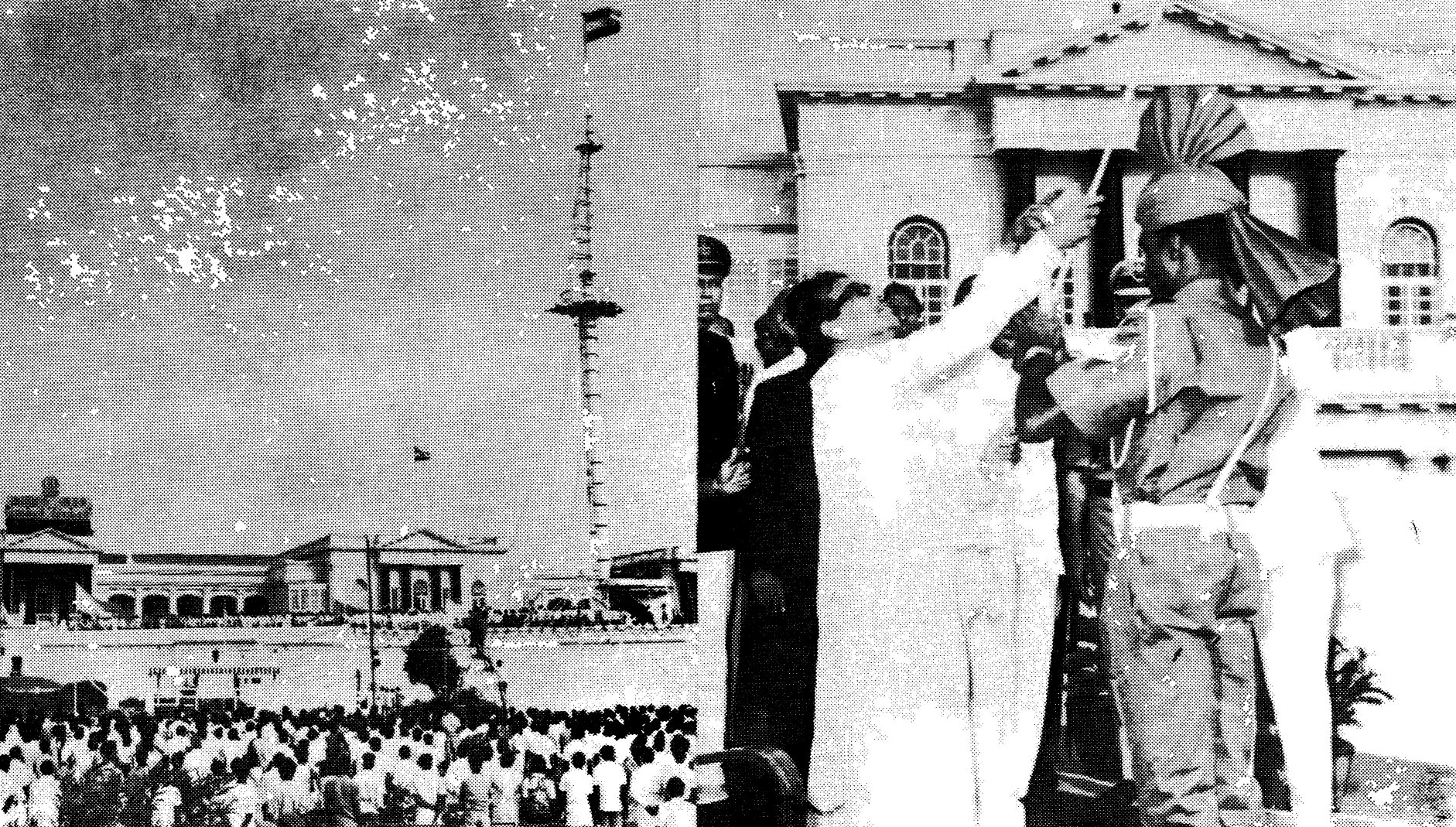The right of India’s chief ministers to hoist the national flag on Independence Day is a hard-earned privilege — one that M Karunanidhi fought for and won.
Published Aug 15, 2025 | 11:00 AM ⚊ Updated Aug 20, 2025 | 9:52 PM

M Karunanidhi hoisting the national flag. (Nenjuku Neethi)
Synopsis: On this Independence Day, we remember how former Tamil Nadu chief minister M Karunanidhi ensured that state chief ministers hoisted the national flag in their respective capital cities on this auspicious day. Before 1974, it was the governors who performed this duty in state capitals on Independence Day and Republic Day.
On this day in 1947, 78 years ago, India broke free from British rule and attained independence. The very mention of the day brings to mind the national flag, military parades, the distribution of sweets and the various celebratory events held across the country.
Just as the struggle for India’s independence has a monumental history, there is also a significant history behind the fact that, in independent India, the chief ministers of states have the permanent right to hoist the national flag on Independence Day.
According to current practice, on Independence Day, the Prime Minister hoists the national flag at the Red Fort and inaugurates the celebrations. On the same day, the chief ministers of each state hoist the flag in their respective state capitals. On Republic Day, the Governors of the states hoist the flag. However, before 1974, this was not the case; it was the Governors who hoisted the national flag in the state capitals on both days.
This changed for the first time in Tamil Nadu in 1974, when the then-chief minister M Karunanidhi hoisted the national flag on Independence Day. It can be said that it was he who secured the right for all chief ministers across India to hoist the flag on Independence Day.
Karunanidhi recorded this in the second volume of his six-part autobiography Nenjukku Neethi, in the 24th chapter titled In the Month of August.
He wrote: “Every year on August 15, it was customary for the Governor to hoist the national flag at the state secretariat in the state capital. I repeatedly wrote letters to Delhi and personally argued that this right should be given to the Chief Ministers elected by the people. As a result, it was decided that on January 26, Republic Day, the Governor would hoist the flag, and on August 15, Independence Day, the Chief Minister would hoist it, not only in Tamil Nadu but in all states.”
In addition, Karunanidhi noted that while the prime minister’s Independence Day address from Delhi was read in newspapers and seen in photographs, he proposed that, in future, the prime minister should visit a different state each year to participate in Independence Day celebrations in that state capital.
For the DMK, the idea of “state autonomy within the framework of federalism” has long been a rallying cry — one that has the power to mobilise the grassroots into political action.
It was with this principle in mind that Karunanidhi, soon after first becoming Chief Minister in 1969, set up a committee under Justice Rajamannar to study Centre–State relations. Fifty years later, his son M.K. Stalin, after becoming Chief Minister, appointed a similar high-level committee under retired Justice Kurian Joseph to examine the same issue.
According to The DMK Years by R Kannan, Karunanidhi believed that “even District Collectors had the right to hoist the national flag on Independence Day, yet the elected chief minister of a state did not. This was an affront to state autonomy and an insult to the state government.”
Veteran journalist AS Panneerselvan, in his biography Karunanidhi: A Life, writes that Karunanidhi celebrated his first Independence Day in office inclusively, inviting leaders of all registered political parties to a gala gathering at Fort St. George on the evening of 15 August. There, he made two key suggestions:
Recalling Karunanidhi’s letter to then-Prime Minister Indira Gandhi, Panneerselvan observed: “Karunanidhi’s point was simple, Governors are appointed representatives, like the President at the Union level, while chief ministers are directly elected by the people, just as the prime minister is. Therefore, the right to hoist the national flag on Independence Day should rest with them.”
To Karunanidhi, the gubernatorial post was not an elected one but an appointed position or selected by already elected representatives. Therefore, he believed that the right to hoist the national flag on Independence Day belonged to the people’s elected representatives. Securing this right, in his view, was part of reclaiming democratic rights.
Historians of the Dravidian movement note that in February 1974, Karunanidhi wrote to Indira Gandhi, emphasising these points. Accepting his request, she issued an order in July 1974 that, from then on, chief ministers would hoist the flag on Independence Day, and Governors would do so on Republic Day.
Thus, the right of India’s chief ministers to hoist the national flag on Independence Day is a hard-earned privilege — one that M Karunanidhi fought for and won.
(Edited by Muhammed Fazil.)
